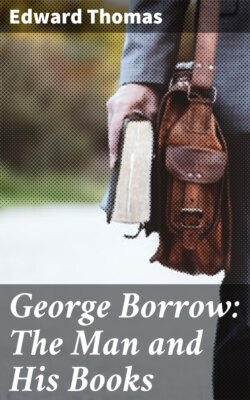Читать книгу George Borrow: The Man and His Books - Edward Thomas - Страница 10
На сайте Литреса книга снята с продажи.
CHAPTER VII—PORTRAITS OF THE ARTIST
ОглавлениеTable of Contents
The five works of Borrow’s maturity—from “The Zincali: or the Gypsies of Spain,” written when he had turned thirty, to “Wild Wales,” written when he had turned fifty—have this in common, and perhaps for their chief quality, that of set purpose and by inevitable accident they reveal Borrow, the body and the spirit of the man. Together they compose a portrait, if not a small gallery of portraits. Of these the most deliberate is the one that emerges from “Lavengro” and “The Romany Rye.” In these books, written after he had passed forty, he described the first twenty-two years of his life, without, so far as is known, using any notebooks or other contemporary documents. As I have said before, the literal accuracy of such a description must have been limited by his power and his willingness to see things as they were. In some ways there is no greater stranger to the youth of twenty than the man of forty who was once that youth, and if he overcomes that strangeness it is often by the perilous process of concealing the strangeness and the difference. The result is—or is it an individual misfortune of mine?—that the figure of “Lavengro” seems to me, more often than not, and on the whole, to be nearer the age of forty than of twenty. The artist, that is to say, dominates his subject, the tall overgrown youth of twenty-two, as grey as a badger. It is very different in “The Bible in Spain,” where artist and subject are equally matched, and both mature. In “Lavengro” there is a roundabout method, a painful poring subtlety and minuteness, a marvellous combination of Sterne and Defoe, resulting in something very little like any book written by either man: in “The Bible in Spain” a straightforward, confident, unqualified revelation that seems almost unconsidered.
